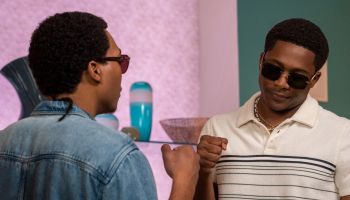This past weekend a flash mob made up of dozens of Black youth attacked attendees leaving the Wisconsin State Fair. The violence was random, the punishment was swift and many of the victims were white.
This past weekend a flash mob made up of dozens of Black youth attacked attendees leaving the Wisconsin State Fair. The violence was random, the punishment was swift and many of the victims were white.
While no one was hurt badly, the incident made national headlines during a busy news weekend that was dominated by the S&P downgrade of the federal government.
Locally, the event incited elected officials and conservative talking heads to rekindle old stereotypes and fan the flames of racial discontent that often permeate segregated communities.
And even though the mainstream media rarely tells the whole story when covering youth of color, the reality is that Black kids growing up in Milwaukee, like other working class Black communities like Philadelphia and Detroit are experiencing a crisis of historical proportions. Their schools suck, unemployment is at record highs and there is no end in sight. And sadly, they are very familiar with violence.
But while the alarming homicide rates in places like Chicago and Philadelphia may shock us and the random acts of mob thuggery like the ones experienced last weekend may scare us, there are also thousands of youth out there trying to change the conversation using creativity, music, art and the Internet.
[pagebreak]
While the mainstream media may not cover their work, I can tell you they are out there. My position as a leader of a national youth organization has put me in contact with thousands of young people under the age of 25 working to rebuild their community through the power of their creativity.(Check out the video below of Milwaukee based rap group responding to the violence at the Wisconsin State Fair.)
Critics may blast them for their brash attitudes, short attention spans and sagging pants, but young people today have more tools at their disposal than any other generation in the history of urban America, including mine, which is still reeling from the violence of the 1990s.
This Is Personal:
When I was 17 years old, my cousin Lynn was murdered. Although Lynn was from Chicago, he and his brothers often came North to Milwaukee to kick it with the family.
Although Lynn was a loveable dude, he was a street kid. The last memory I have of my cousin is him memorizing the words of Outkast’s “Players Ball.” It was 7 a.m. and he was sitting on my bed and pressing rewind on my CD player. I got up and went to school. He probably didn’t.
[pagebreak]
Lynn wasn’t the first person that I knew who had been murdered. Even though my parents moved to Milwaukee’s working class, blue-collar Northwest side when I was in the first grade, the harsh economic realities of ’80s and ’90s had spread outside of the ghetto. By the time I was in middle school, kids from my neighborhood were getting jacked for Starter coats.
By the time I was in high school, the drug trade was booming and the quest to “stay fresh” was pulling everyone from street kids like Lynn, to blue-collar mama’s boys into the “game.”
Thankfully, I had sports, a knack for leaving before things got too hot and a father who would beat my butt, because I never really saw the streets as a viable option.
While elected officials debate debt ceilings and ideological tomfoolery, our nation’s youth are still suffering from hopelessness. Without a solid investment (youth jobs, quality education and youth recreation) in their futures, we will lose this generation in the same way we lost many of the youth in the ’80s and ’90s.
Even worse, we will miss the opportunity to connect young people to massive amounts of fun, knowledge and intellectual capital that is literally just a click away.
[pagebreak]
Yes, the problems of our times: joblessness, inadequate schools and a weakened social safety net are in “effect mode.” And yes, there are even less recreational opportunities and pathways out of poverty than when I was growing up in the ’90s.
But never before in history have young people been so connected. While it is rarely discussed as an asset, technology brings young people together in ways never imagined just 15 years ago.
The choice America has to make is whether we or not we let the next generation use their networking skills to plan violent flash mobs, or will we give them the tools and capital to rebuild their communities?
We can turn our back on the future, or we can invest in the next generation of leaders who are poised to change the world. It’s up to us.
Rob Biko Baker is the Executive Director of the League of Young Voters Education Fund. Tomorrow, August 10, GlobalGrind.com co-President Michael Skolnik will be participating in the League’s Summer Chat series atYoungVoterLive.com at 4 PM EDT/ 3 CST. On September 4th, 2011 the League is hosting its 7th Annual Put the Guns Down Festival in Milwaukee, WI. GlobalGrind.com is the media partner for this important community event.















